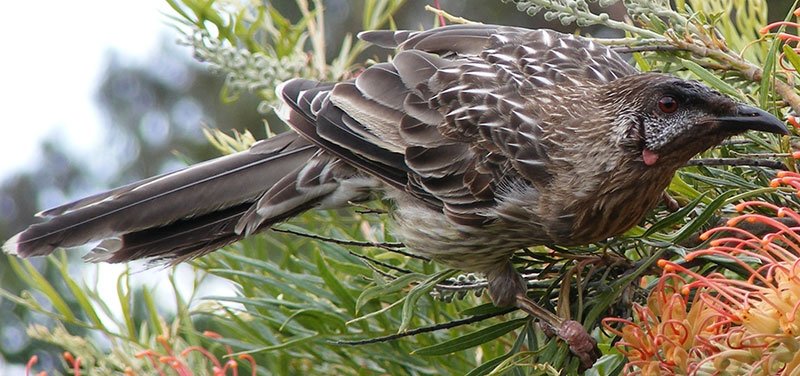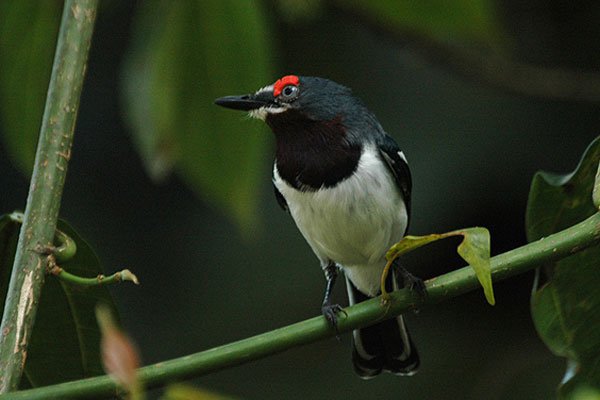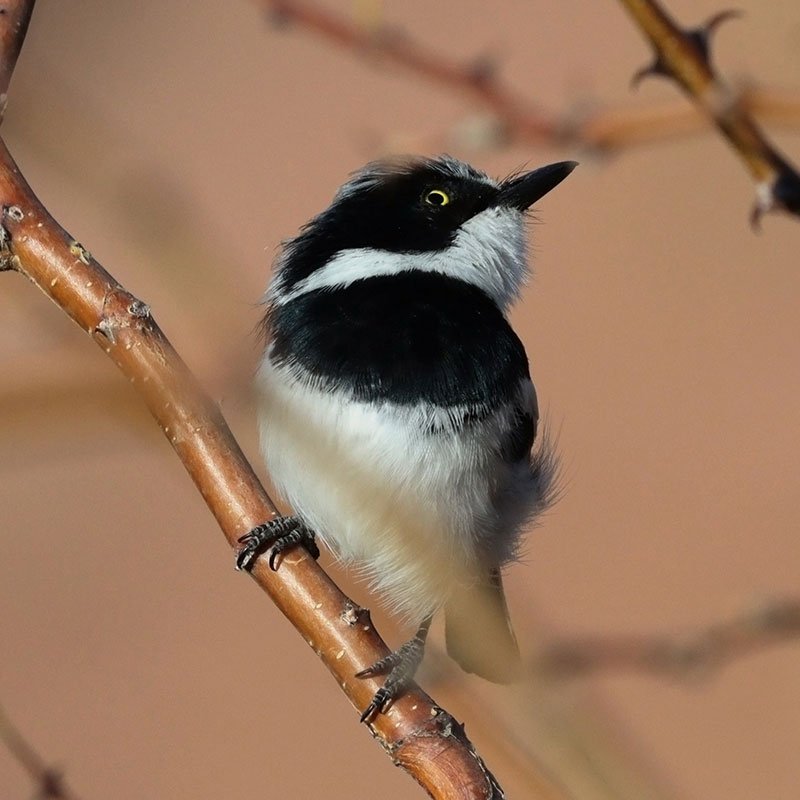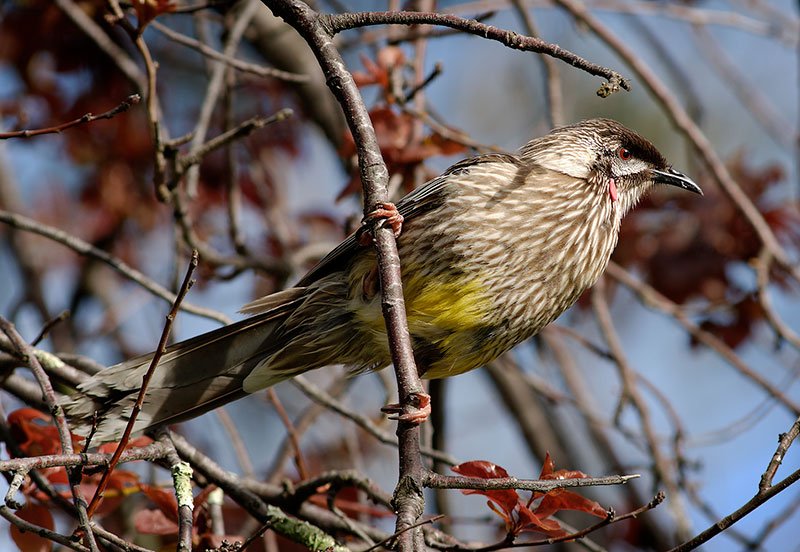Wattle Eyes
Chris Quirin, CC BY 4.0, via Wikimedia Commons
Platysteiridae
by Inspector Barry Mins on September 19, 2023Hey kids, welcome back to our series on the mysteries of created kinds. Last week, we met some seed-eating, ground-dwelling birds. This week, we move to the African tropics to meet a kind of colorful songbird.

This kind is known only from the African woodlands and rainforests, and little has been written about them. They roost in trees but will adapt to human habitats as well. At least one species can mimic a related species song.1 Unlike most songbirds, they are less sleek and stouter. They are voracious insect eaters, consuming all kinds of insects and arthropods. Even venomous scorpions are not safe from the beaks of these birds!
With many species of this kind, the males are more colorful than females. Usually, two eggs are laid in a typical songbird nest.2 Both chicks are fed, but there’s a preference to the older chick until fledging (when birds grow feathers to fly) when the preference switches.3 Very rarely will the parents have a second clutch of eggs in a year.
Has anyone figured it out yet? This week’s kind is the Platysteiridae—the wattle-eye kind. These birds seem quite comfortable with humans, often spending time in and around farmers’ crops. Stay tuned for next week when we meet a small group of songbirds.
Try out this fun word search!
Clue
Your clue for the week is:
There are three genera and only five species in this kind. They are found exclusively in New Zealand.
Ask a Question
Have you ever had a question about created kinds but didn’t know who to ask? Have you ever wanted to learn more about your favorite kind? Well, now you can! You can ask me, Inspector Barry Mins, a question! Have your parents help you fill out this form, and you might get your question answered in my column! If you have any questions about created kinds, feel free to send them my way!
Footnotes
- John W. Wilson and Michael Scantlebury, “The Chinspot Batis (Batis molitor) Mimics the Woodward’s Batis (Batis fratrum): Evidence of Interspecific Competitive Acoustic Mimicry?” Ostrich: Journal of African Ornithology 77, no. 3&4 (November 2006): 233–234, https://www.researchgate.net/profile/John-Wilson-43/publication/236593286_The_Chinspot_Batis_Batis_molitor_mimics_the_Woodward's_Batis_Batis_fratrum_Evidence_of_interspecific_competitive_acoustic_mimicry/links/0deec518275b6d0478000000/The-Chinspot-Batis-Batis-molitor-mimics-the-Woodwards-Batis-Batis-fratrum-Evidence-of-
interspecific-competitive-acoustic-mimicry.pdf. - Michael S. L. Mills and Alexandre Vaz, “The Nest and Eggs of Margaret’s Batis Batis margaritae,” Bulletin of the British Ornithology Club 131, no. 3 (March 2011): 208–210,
https://www.birdsangola.org/downloads/millspubs/
Mills%20&%20Vaz.%202011.%20Bull%20BOC%20(Angola,%20Margaret's%20Batis%20nest).pdf. - Ara Monadjem, “Aspects of the Breeding Biology of the Chinspot Batis Batis molitor in Acacia Savanna in Swaziland,” Ostrich: Journal of African Ornithology 77, no. 3&4 (November 2006): 160–163, https://www.researchgate.net/profile/Ara-Monadjem/publication/236838241_Aspects_of_the_breeding_biology_of_the_Chinspot_Batis_Batis_molitor_in_Acacia_savanna_in_Swaziland/links/0c96051beeec382eb7000000/Aspects-of-the-breeding-biology-of-the-Chinspot-Batis-Batis-molitor-in-Acacia-savanna-in-Swaziland.pdf.
- © 2024 Answers in Genesis
- Privacy Policy
- Contact
- About




